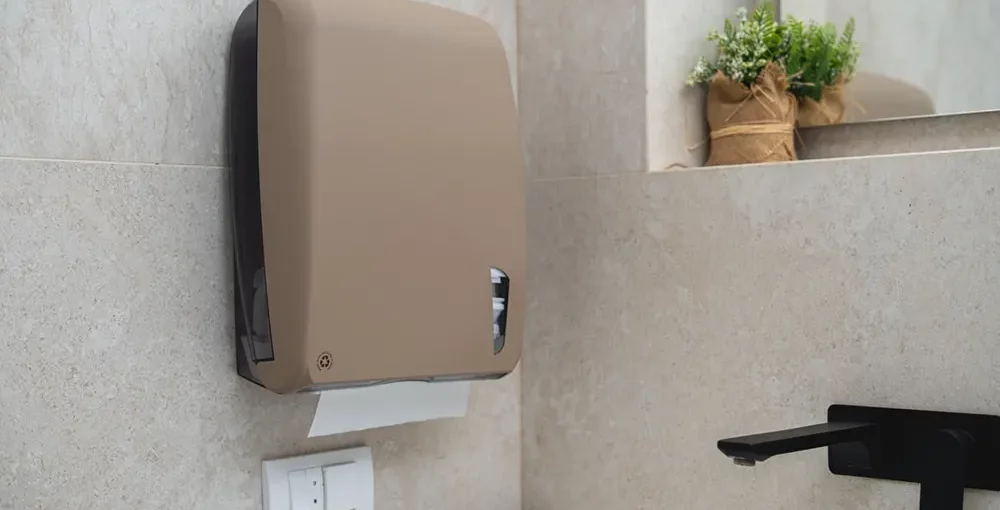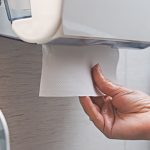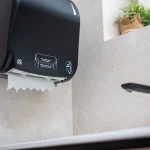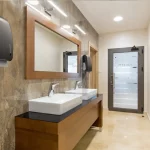The big break is a stress test no one calls by its name. 180 seconds, hundreds of small hands, a sequence of moves that must work flawlessly. If the dose doesn’t come out the first time, if the paper turns into a fan, the tension spills into the classroom and cafeteria. Value isn’t measured on paper here but in speed, dry floors, and habits that endure every day. Within that frame, dispensers for schools and kindergartens aren’t “equipment” — they’re infrastructure: they either keep the rhythm or break it. Below, we explain exactly where things fail and how to fix them.
Related topics: How office and open space dispensers turn chaos into order
Order today the setup that passes the big break test: zoning, proper heights, sheet-by-sheet and factory-set dose — dispensers for schools and kindergartens that carry the rhythm, not break it. Call LUU: +381 66 811 83 82
Where exactly the problem arises with dispensers for schools and kindergartens
In school hallways, everything flows in short waves: the bell, the crowd, three minutes for everyone to wash and dry their hands. The system breaks when capacity and speed aren’t aligned with the flow. A regular model at the entrance can’t deliver a dose to everyone, jams form, and kids start skipping handwashing.
In classrooms and kindergarten rooms, the issue is ergonomics. The dispenser isn’t at eye level or the right height, so children look for the device, miss the button/lever, and slow down the line. In toilets, the paper format causes chaos — “fan” pulls invite grabbing handfuls, floors get wet, and consumption soars.
With soaps, dosing and scents are often inconsistent. One shift pours too much, another too little; strong scents and harsher formulas repel the youngest users, habits break, and hands stay half-washed.
Supplies are managed “by feel,” so right at the rush hour, an empty dispenser is discovered and the run to the storage begins. Moreover, no one is specifically responsible for the location, and with no time log for the last check, problems repeat. This is made worse by the lack of standards (different refills and models in the same wing) and small mechanical issues like heavy lids or “lost” keys. When seasonal surges hit (winter, school events), dispensers for schools and kindergartens switch into constant firefighting mode instead of a calm, repeatable rhythm.
Related topics: Why a paper towel dispenser is more than “Just a box”
Make your standard one that works by itself — touch-free models for entrances, mechanical ones for classrooms, and jumbo rolls in toilets. Install once, and it works every day. Contact us now +381 66 811 83 82
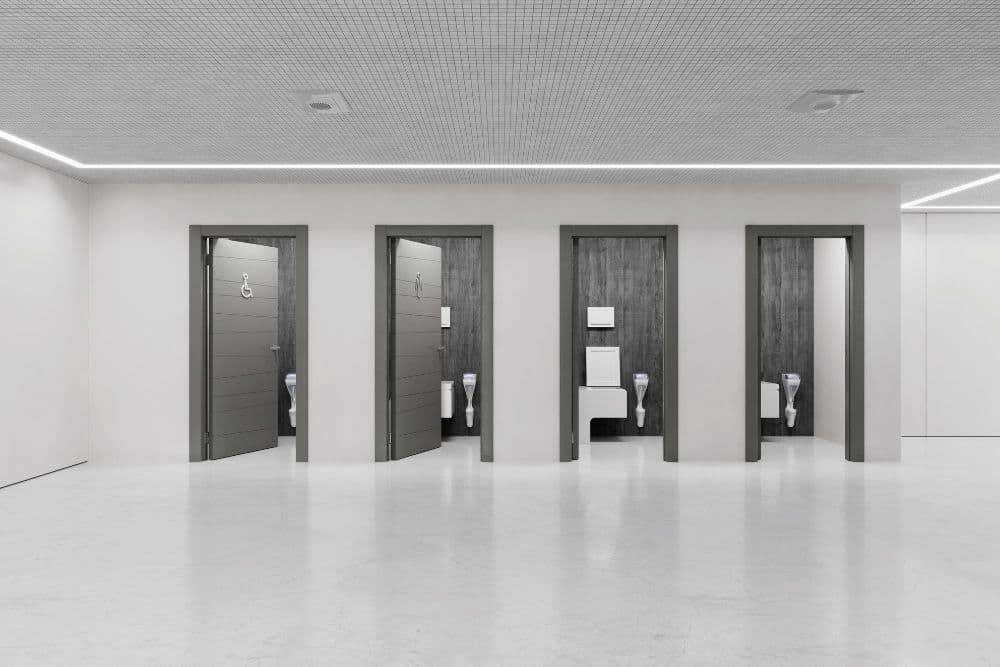
A unified solution: how to make dispensers for schools and kindergartens work every time
-
Smart zoning:
Entrances and main hallways get touch-free models with large capacity and quick response, classrooms/kindergarten rooms use mechanical models (work even with wet hands), toilet areas combine soap + sheet-by-sheet with a jumbo roll, while dining areas and kitchen access points use closed-system refills and surfaces resistant to frequent cleaning. The result: dry floors, smooth flow, no improvisation, controlled consumption.
-
Ergonomics (heights and visibility):
Heights by age: kindergarten 90–100 cm, lower grades 100–110 cm, older students 110–120 cm, always placed near the sink, directly in line of sight after rinsing. The result: children don’t search for the device or “guess” the dose. The action is quick, safe, and clean.
-
Dosing and formulas:
Foam helps children visually “see” the right amount; gentle dermatologically tested formulas without strong scents build habit without irritation, and factory-calibrated doses remove “approximate” differences between shifts. The result: truly clean hands, predictable consumption, and fewer interventions.
-
Supplies as a mini-system (numbers, not feeling):
Each zone has minimum and target levels. Example: 120 sheets/day, 3-day delivery, 2-day safety stock → minimum 600, target 720. Shelves are labeled (“full = 720 | refill at = 600”), high-traffic points keep micro-stocks (1–2 refills beside the dispenser), and during virus season levels are temporarily raised. The result: refills arrive on time, rush hours pass calmly, and storage isn’t “putting out fires.”
-
Responsibility by name:
Each zone and shift has a responsible person and a backup. Next to each device is a label with the zone, name, and time of the last check.
Micro-ritual (1 minute): morning → before break → refill below threshold → log the time. The result: no “I thought someone else did it.” The system is clear, safe, modern, and repeatable.
Why all this works specifically with the LUU configuration. Closed refills and controlled doses protect the contents and keep floors dry; sheet-by-sheet and standard doses reduce waste and maintenance calls. For children, everything is intuitive (touch-free or large button, clear pictograms). The facility looks neat and modern through unified design, and the budget becomes predictable because consumption is stable and planned.
Related topics: It’s time for a new generation: Dispensers that speak on behalf of your space
Order today a complete set by zones (entrance, classroom, toilet, cafeteria) and introduce uniform dosing, dry floors, and a steady flow. Call LUU: +381 66 811 83 82
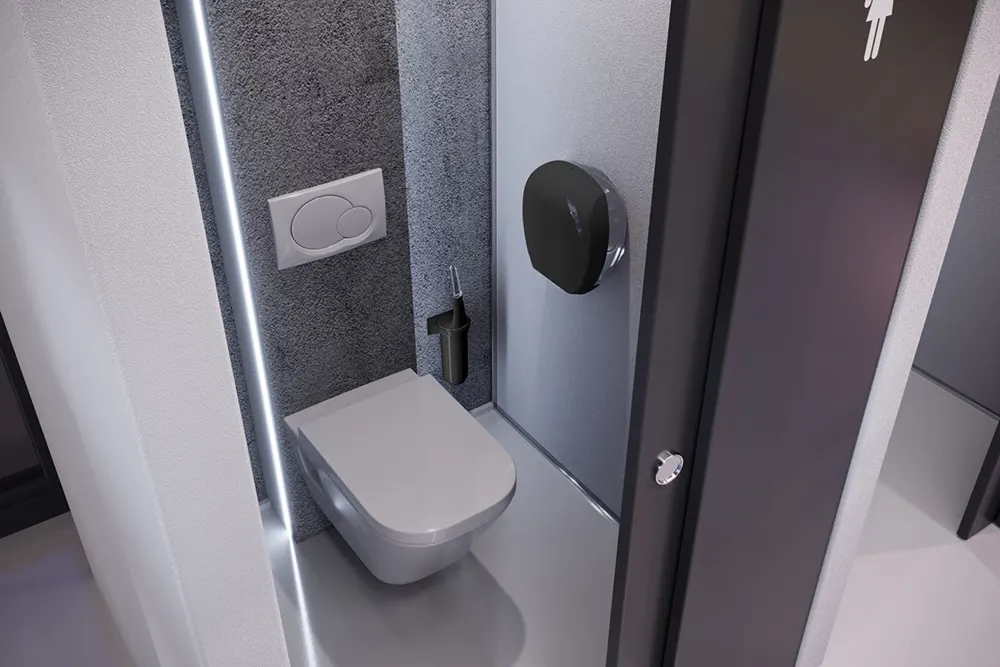
Dispensers for schools and kindergartens as the foundation of order, not an obstacle
When things are arranged properly — the right model in the right place, clear height and visibility, consistent dosing, stock managed by numbers, and accountability by name — the handwashing ritual becomes fast, safe, and clean. Disorder disappears, floors stay dry, consumption stabilizes, and the budget finally becomes predictable.
That’s the difference between a system that constantly breaks down and one that runs by itself — in both peak and quiet times. That’s exactly where dispensers for schools and kindergartens stop being “boxes” and become part of the order and reputation of the institution.
The benefits are visible on multiple levels: children form steady habits, staff maintain their rhythm without interruptions for refills, maintenance becomes quicker, and parents notice a tidy, modern space that protects health. Less waste and less improvisation mean funds return to the purpose schools and kindergartens exist for — teaching and programs.
If you wish, LUU can take over the entire process: site assessment, zoning with capacities, height mapping, standard formats (soap/foam and sheet-by-sheet), a table of minimum and target levels, pilot setup with clear indicators, staff training, and regular service. Discreetly and without workflow interruptions.
Related topics: Toilet paper dispenser: Are you sure your restroom isn’t ruining the whole impression?
From the first bell to the last shift, without interruption. Schedule a visit and get a zone-by-zone plan ready for implementation. Call LUU: +381 66 811 83 82.
Sign up and bring order in 180 seconds. Once a month we send micro-steps that turn dispensers for schools and kindergartens into a reliable system: proper heights, doses that work, dry floors, and a calm budget. No spam — just solutions that last the entire school year.

